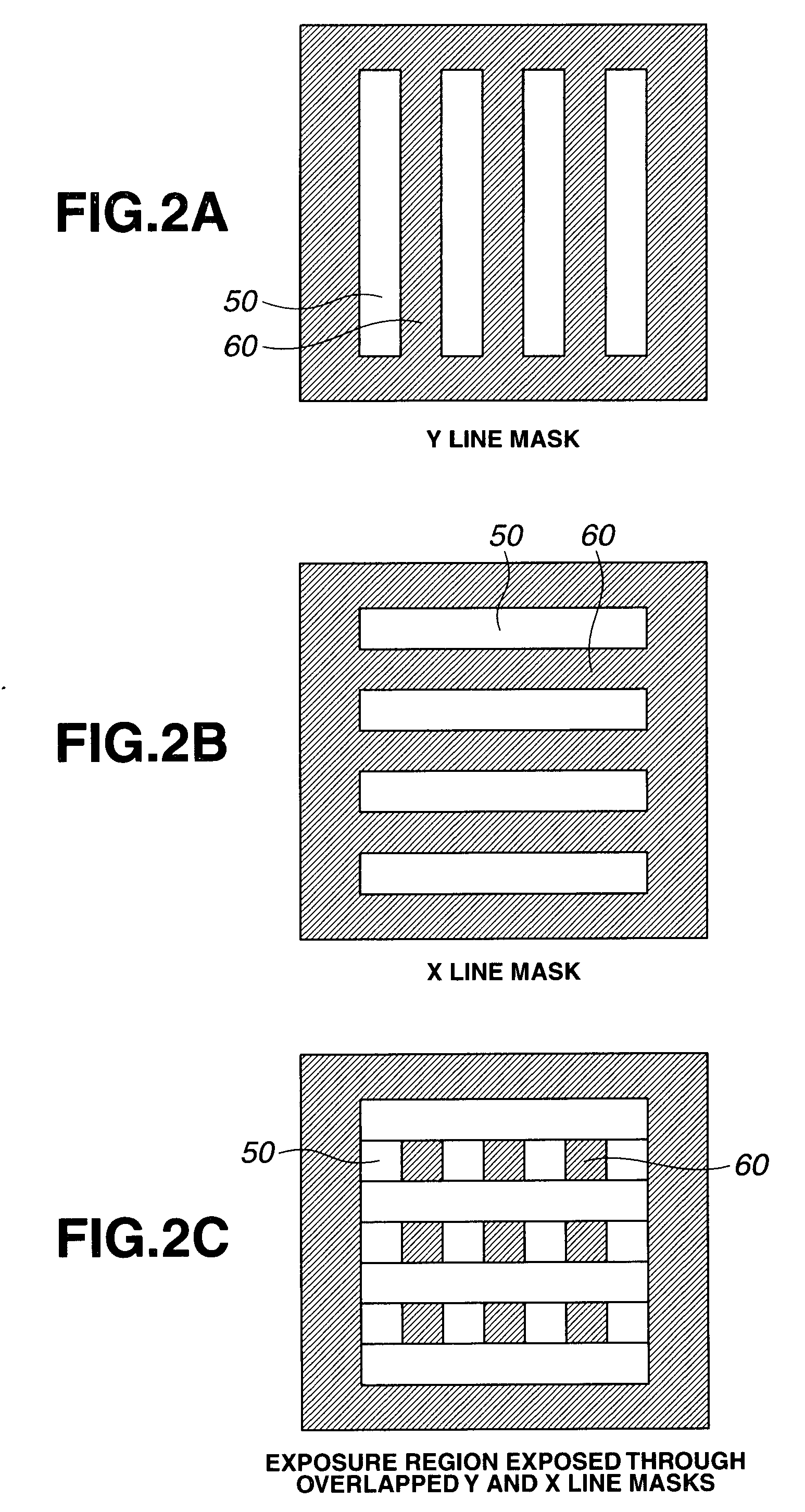Patterning process
a pattern and process technology, applied in the field of pattern formation process, can solve the problems of low resist resistance etching resistance, high cost of scanner, and obviation of bubble generation risk, so as to achieve high contrast, high contrast, and difficult pattern formation
- Summary
- Abstract
- Description
- Claims
- Application Information
AI Technical Summary
Benefits of technology
Problems solved by technology
Method used
Image
Examples
example
[0414]Examples of the invention are given below by way of illustration and not by way of limitation. The abbreviations used herein are GPC for gel permeation chromatography, Mw for weight average molecular weight, Mn for number average molecular weight, Mw / Mn for molecular weight distribution or dispersity, NMR for nuclear magnetic resonance, PAG for photoacid generator, and TAG for thermal acid generator. For all polymers, Mw and Mn are determined by GPC versus polystyrene standards.
synthesis examples
[0415]Polymers for use in reversal film-forming compositions were prepared by combining various monomers, effecting copolymerization reaction in tetrahydrofuran medium, crystallization in methanol, repeatedly washing with hexane, isolation, and drying. The resulting polymers (Polymers 1 to 13 and Comparative Polymers 1 to 2) had the composition shown below. Notably, a phenol group on a monomer was substituted by an acetoxy group, which was converted back to a phenol group by alkaline hydrolysis after polymerization. The composition of each polymer was analyzed by 1H-NMR, and the Mw and Mw / Mn determined by GPC.
[0416]Polymer 11: a novolac resin of m-tert-butylphenol and 1-naphthol in a molar ratio of 6:4, with Mw 8,600 and Mw / Mn 4.8[0417]Polymer 12: a novolac resin of 4,4′-(9H-fluoren-9-ylidene)-bisphenol, with Mw 7,900 and Mw / Mn 5.1[0418]Polymer 13: a novolac resin of (9H-fluorene-9-ylidene)-bisnaphthol, with Mw 1,600 and Mw / Mn 3.8
[0419]Reversal film-forming compositions were prepare...
PUM
 Login to View More
Login to View More Abstract
Description
Claims
Application Information
 Login to View More
Login to View More - R&D
- Intellectual Property
- Life Sciences
- Materials
- Tech Scout
- Unparalleled Data Quality
- Higher Quality Content
- 60% Fewer Hallucinations
Browse by: Latest US Patents, China's latest patents, Technical Efficacy Thesaurus, Application Domain, Technology Topic, Popular Technical Reports.
© 2025 PatSnap. All rights reserved.Legal|Privacy policy|Modern Slavery Act Transparency Statement|Sitemap|About US| Contact US: help@patsnap.com



